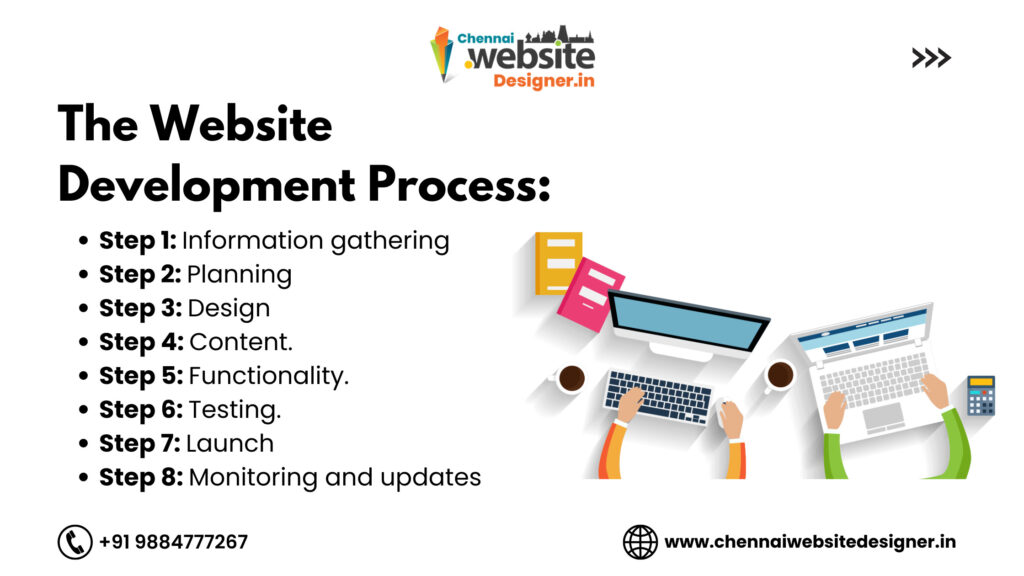Discover the essential guide to successful website development with our comprehensive overview. Start your journey today!
The emergence of the first website in 1991 marked the beginning of a remarkable growth in website design and development. In today's world, having a well-designed website is essential for the success of any business. A website serves as a platform for customers to understand your business and its offerings. It is where they can easily reach out to you and gather more information about your brand. However, it is important to acknowledge that website development is a complex task. Creating a website involves various aspects, ranging from acquiring a domain name to constructing the front-end and back-end of the site. Developing a user-friendly website that effectively represents your brand requires careful consideration and effort. To assist you in this process, we have prepared a comprehensive guide that will walk you through the steps of website development.
Table of Contents
ToggleWhat is website development?
Website development refers to the process of creating and building a website from scratch or modifying an existing one to meet specific requirements. It involves a combination of technical skills, creativity, and problem-solving abilities to design and develop a functional and visually appealing website. This process includes various stages such as planning, designing, coding, testing, and launching the website. Website development encompasses both the front-end (user interface) and back-end (server-side) development, ensuring that the website is user-friendly, responsive, and optimized for search engines. It is a crucial aspect of establishing an online presence and enables businesses and individuals to showcase their products, services, or ideas to a global audience.

Types of website development?
There exist several distinct forms of website development, with front-end development and back-end development being the most prevalent. These terms pertain to the visible aspects of a website that users interact with, as well as the hidden components that users are unaware of.
Front-End:
- Customer-facing side of the Website
- Focused on visual elements
- Layouts, Navigation, Graphics, Content
Back-End:
- Server side of the website
- Focused on functionality
- Building code, Debugging, Data
Front-End Website Development:
Front-end development encompasses the visual and interactive elements of a website development that users engage with. This includes designing the website's layout, colors, fonts, and images to create a specific look and feel. As a front-end developer, your role is to ensure the website is visually appealing and user-friendly. Front-end development requires proficiency in tools such as Photoshop and Illustrator for designing the website. Additionally, a front-end developer must have a solid understanding of programming languages like HTML, CSS, and JavaScript. This knowledge is essential for creating interactive elements on the website, such as buttons and navigation menus.
Back-End Website Development:
Back-end development involves the functionality of a website that is not visible to the user. It focuses on the operations of the website rather than its appearance. This includes tasks such as user authentication, network and hosting setup, database management, and other activities that occur behind the scenes of a website. A back-end developer ensures the smooth operation of the website. For instance, when users input their data on a website, a back-end developer is responsible for organizing and analyzing that information. Proficiency in server-side languages like Ruby. Net, and Python, is essential for a back-end developer. On the other hand, full-stack development encompasses both front-end and back-end development. Full-stack developers possess knowledge of programming languages as well as server-side languages, enabling them to handle all aspects of website development. Due to the convenience of hiring a single individual for the job rather than two, many businesses opt for full-stack developers. Nevertheless, this role remains highly sought after in the technology industry.
What is involved in the process of website development?
The creation process may vary for each website, however, in general, it will involve the following 8 steps:

Step 1: Information Gathering
In order to commence the construction of a website, it is imperative to collect pertinent information. This will encompass determining your objectives, primary aims, and intended audience. The reason for creating this website is essentially your purpose. Is it to promote yourself or to provide information on a specific subject? Your objectives are what you aim to achieve with this website. Setting goals will provide you with a clearer understanding of how to approach the website creation process and what content to incorporate. Your target audience is the group of individuals your website will attract. Every business has a target audience, so it is important to determine yours before actually building the website. Envision your ideal customer, considering factors such as their age, gender, and interests.
Step 2: Planning
After collecting the fundamental details for your website, the next step is to initiate the planning process. Utilizing the information gathered in the initial stage, you will construct a sitemap. A sitemap serves as a comprehensive inventory of all the main topics and sub-topics of your website. By visualizing the website through the sitemap, you will be able to understand how users can seamlessly navigate from one page to another. This particular step holds great significance as it enables you to develop an appealing website that offers effortless navigation.
Step 3: Design
Once the website outline has been established, the next step is to determine its visual appearance. This involves incorporating all visual elements, including images and videos. It is important to consider your target audience when designing the website. A public relations brand will require a website that is distinct from a brand targeting pet owners. It is essential to tailor your website to meet the specific preferences and requirements of your target audience.

Step 4: Content
The information displayed on your website plays a crucial role in its success. It serves as a means to communicate with your audience and entice them to engage with your site. Defining your objectives and purpose is essential before creating content, making step 2 a critical part of the process. Your content must be engaging and pertinent to ensure repeat visits from your users.

Step 5: Functionality
During this stage, you will commence the process of constructing your website. It is at this point that the previous steps will converge to establish the appearance and operation of the website. It is essential for your website to be user-friendly and navigable. Typically, the homepage is developed initially, followed by the creation of sub-pages. Additionally, it is crucial to ensure that the website is accessible from both desktop and mobile devices.
Step 6: Testing
Once the website has been successfully developed, it is not yet ready for launch. Before launching, it must undergo testing. While testing the website can be a time-consuming process, it is crucial to ensure that the website is functioning properly. During this stage, all links, and buttons on the website will be tested, the spelling will be verified, and the website's appearance will be confirmed to be consistent on both phones and computers.
Step 7: Launch
After thoroughly reviewing the website and running various tests, the exciting next step is to launch it. To do so, the website must be uploaded to a server. Following the upload, it is recommended to conduct a final test to confirm everything is functioning correctly. Once this is done, the website will be available to the public.
Step 8: Monitoring and updates
It is essential to periodically review your website even after its successful launch. Errors may occur, so it is crucial to continuously monitor the website to ensure its optimal performance. Promptly addressing any issues and regularly updating the content will help maintain the website's quality.
Conclusion:
In conclusion, the text provides a comprehensive overview of the key steps and considerations involved in successful website development. It emphasizes the importance of planning, design, content creation, and testing to ensure a well-executed and effective website.

Leave a Reply